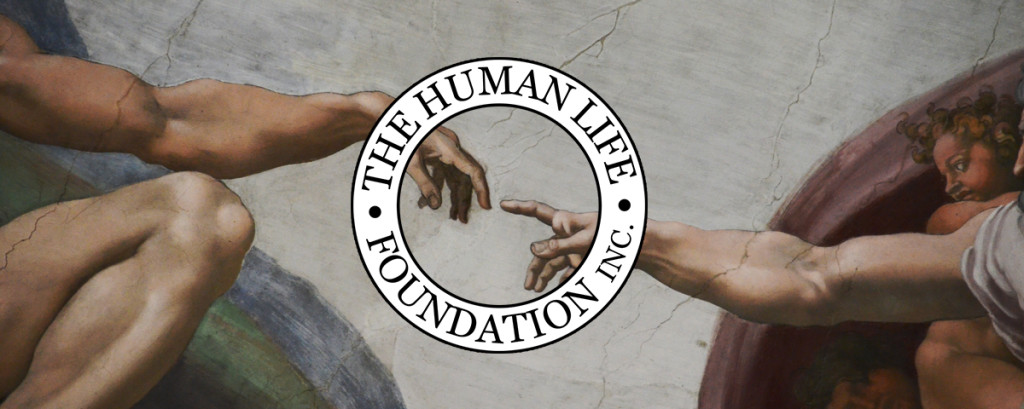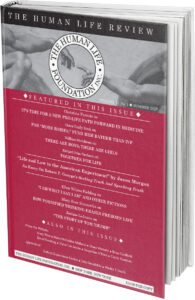PUSHING ROE V. WADE OVER THE BRINK: THE BATTLE FOR AMERICA’S HEART, THE HUMAN RIGHT TO LIFE, AND A FUTURE FULL OF HOPE
Clarke D. Forsythe and Alexandra DeSanctis
(Americans United for Life, hardcover, 324 pages, $19.95, PB $14.95)
Reviewed by John M. Grondelski
_____________________________________________________________________
The history of U.S. pro-life activism is woefully under-documented. Compared to the flood of pro-abortion “histories” being published, especially by university presses, pro-life work is underrepresented. Compounding that problem are two things: 1) pro-abortionists who misrepresent pro-life activism (such as Linda Greenhouse and Reva Siegel in Before Roe v. Wade) and 2) the danger on the pro-life side of losing primary source materials, because we lack an organized plan for preserving and archiving that material.
The appearance, therefore, of pro-life histories of our movement by pro-life writers is always welcome. This is especially true when the history features one of the major and most impactful of that movement’s groups—Americans United for Life—and is written by established writers like Clarke Forsythe and Alexandra DeSanctis. The fact that this book is self-published only emphasizes the problem prolifers have in recording and distributing our story.
Americans United for Life (AUL) has primarily advanced the pro-life movement through legal advocacy. Although the pro-life movement would not be where it is without the substantial role played by its volunteers, AUL has been impactful precisely because of its national reach and its command of the professional resources needed to fight the pro-life fight in the legal, political, and social circles where decision-making occurs. This book documents AUL’s work in that field, centering on overturning Roe v. Wade and its illegitimate progeny.
Americans United for Life was founded in 1971 (predating Roe by two years). The book’s opening chapter addresses the “bioethical revolution” that led to that decision—because Roe did not spring fully grown from the brow of Harry Blackmun. Biomedical developments in the 1950s and especially the 1960s generated legislative and ethical debate over a wide range of issues connected with procreation: That the famous 1970 California Medicine editorial discussed the contest between “sanctity” and “quality” of life ethics attests to the reality that bioethical debate was by then already well underway. And though procreation in general and abortion in particular may have been the lightning rods of that bioethical debate, the authors also take pains to devote space to the euthanasia issues that were already lurking around.
Largely forgotten now was the effort in those early days to talk intellectually across debate lines and to argue the pro-life case precisely from the perspective of the unborn. The authors discuss an early project of AUL’s: the book Abortion and Social Justice, a collection of essays from a distinguished cross-section of credentialed thinkers—lawyers and academics like John Noonan, David Louisell, George H. Williams, Thomas Hilgers, and Dennis Horan. We need a similar public presence today.
That book, by its very title, points to an animating principle of AUL: The abortion fight is a fight for social justice, for the most basic civil and human right of the unborn. That perspective has been largely lost from public consciousness where, to the extent that abortion is seen as a “rights” issue, it is primarily or even exclusively seen from the “right to choose” side. Curiously, even in some pro-life quarters, the focus of pro-life discussions has so turned to the mother and her dilemmas that the question of life itself seems sometimes to have been eclipsed.
As the authors document, this was never the case for AUL. According to AUL, Blackmun was expecting “that states would fill the public-health vacuum created by . . . Roe . . . during the 1973 legislative sessions” (p. 61). But if he expected state legislatures to enact abortion-on-demand in light of Roe— an outcome its advocates generally dissembled about admitting—he found instead that most state legislatures, once they figured out Roe’s true scope, were intent on clawing back some limits to abortion. To summarize the next 49 years, that meant the Supreme Court “splintered.” Until Dobbs, a slowly shrinking majority tried to sustain Roe’s unrestricted abortion license while a growing minority (that eventually became the majority) sought to keep the court from every expansion abortion advocates sought. The upshot was that the court hollowed out democratic discussion of abortion by inserting itself as supervisory super-legislature to monitor abortion policy, a distorted role about which, in 2022, Samuel Alito finally said, “Enough!”
The book traces AUL’s participation in all those cases, trying from the 1976 debacle of Danforth to progressively chip away at Roe through its multiple contradictions, such as its ambiguous standard of “viability.” Initial hopes of success by the early 1990s were, unfortunately, dashed by Casey. AUL got back into the trenches, again incrementally eroding Roe as reincarnated in Casey until, finally, victory!
A valuable chapter also details the unsuccessful effort to create a Roe-like “right to die” in the mid-1990s. As previously noted, while bioethics issues at the beginning of life occupied the forefront of public attention, many of the same people were using the same arguments to try to constitutionalize a similar outcome at the end of life.
But while the general lines of the history of the abortion cases are well known, the value of a book like this is the “insider baseball,” reporting on the background, influences, conversations, and personalities that drove decision making and policy efforts. How decisions were made within AUL and how AUL worked with government—especially when government was friendly, as in the Reagan and Bush administrations—are all valuable historical insights that give us a fuller picture of how the abortion debate played out.
The book opens by putting the abortion debate within the context of bioethics issues in the 1960s. It closes with a chapter on bioethics issues in the 21st century, identifying these challenges to the pro-life vision today: the erosion of robust human rights affirmations by “moral skepticism,” the challenges of abortion policy in a post-Dobbs environment (compounded by intersection with reproductive technologies and one political party that ties its electoral fortunes to promoting abortion), the growing pressure for assisted suicide, healthcare policy that protects human life, games people play with “informed consent,” and the growing suppression of conscience rights of health care personnel.
A valuable addition to pro-life libraries (and one that should find its way into local public libraries—consider donating a copy to yours), Pushing Roe v. Wade Over the Brink is a thorough yet sympathetic history of how and why one leading pro-life group worked for more than half a century to restore civil rights. Consigning Roe to the same fate as Dred Scott should remind us that pro-life is the legitimate heir of the abolitionist movement, establishing it as today’s civil rights movement.
____________________________________________
Original Bio:
John Grondelski (Ph.D., Fordham) was former associate dean of the School of Theology, Seton Hall University, South Orange, New Jersey.









